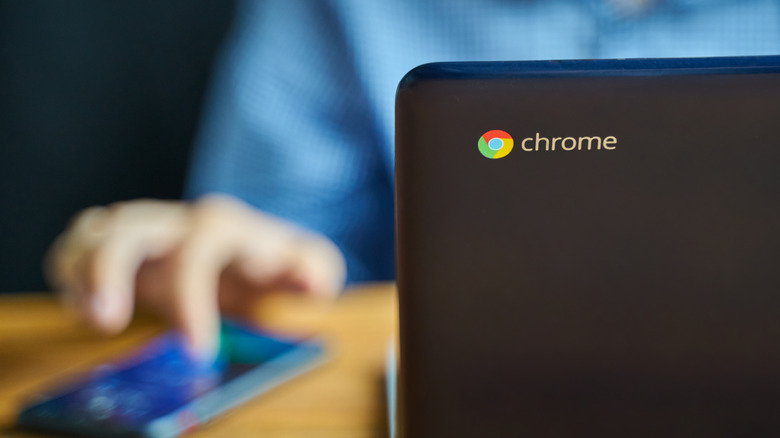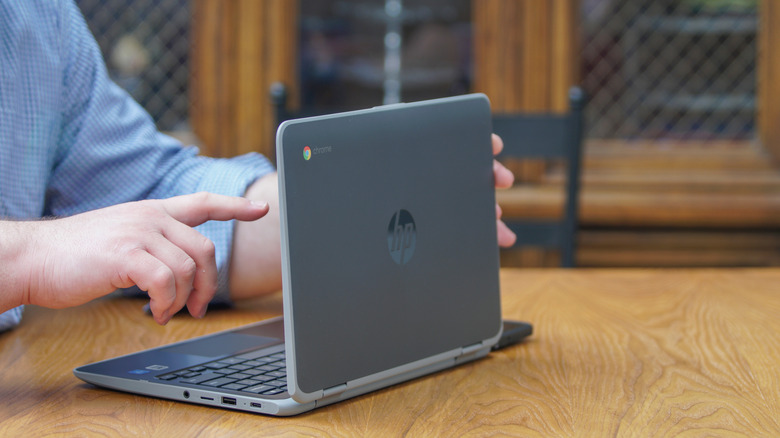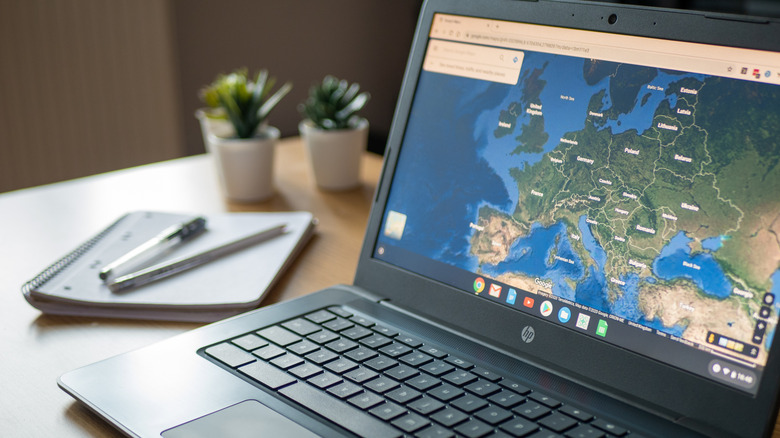Is It Okay To Leave A Chromebook On Its Charger? Here's How To Maximize Your Battery's Life
Like any device you use regularly, you may be tempted to leave your Chromebook plugged in for extended periods. That's especially true if you use it at home, where you have an electrical outlet nearby to keep it charged without having to give it a second thought. As convenient as this practice may be, it may have unintended consequences for your Chromebook's battery. Even if you own a Chromebook with ultra-long battery life, you need to take care of it to make sure it stays healthy and doesn't wear out faster than it should.
The problem is that best practices aren't always as obvious, which has led to confusion about whether constant charging could shorten the lifespan of a Chromebook's battery. Keeping your Chromebook fully charged for long stretches can gradually reduce its ability to hold a charge. However, if you're in the habit of leaving your Chromebook on its charger, you'll be happy to know that newer models include built-in safeguards, like adaptive charging, to protect the long-term health of the battery.
While this feature can help extend your Chromebook's battery life, it doesn't mean you should ignore battery care altogether. Doing things like occasionally unplugging your Chromebook to let it cycle through discharge and recharge can help keep it working at its best.
Leaving a Chromebook on its charger is generally okay if you use adaptive charging
You may worry about whether you can leave your Chromebook on its charger all the time because, once upon a time, keeping a computer constantly plugged in was a surefire way to kill its battery. Today's laptops use lithium-ion batteries instead of alkaline batteries, improving their ability to handle regular charging without immediate damage. Still, letting your Chromebook's battery stay at 100% for too long can cause the battery to degrade quickly. Unplugging your Chromebook from time to time to let it discharge at least partially reduces the wear that comes from staying fully charged all the time.
Turning on adaptive charging is another way you can protect your Chromebook's battery, which uses machine learning to get to know your charging routine and predict when you'll unplug it. Based on your usage patterns, the battery will stay below full for most of the time you're charging your Chromebook. It'll only reach a full charge right before you usually disconnect. If you always unplug your Chromebook as soon as it's fully charged, the adaptive charging feature won't come on.
Follow these steps to turn adaptive charging on or off:
- Click the battery icon at the bottom right-hand of the screen.
- Open Settings, then go to System preferences and select Power.
- Select Adaptive charging.
- Toggle the switch to turn Adaptive charging on or off.
Once you've turned adaptive charging on, you'll get a notification when your Chromebook's battery is holding at around 80% or higher. If you want to temporarily stop adaptive charging, you can select Fully charge now to immediately charge it to 100%.
How to maximize the life of your Chromebook's battery
When it comes to getting the most out of your Chromebook's battery, you shouldn't stop at adaptive charging. While smart features can help, your daily charging habits still play an important role in preserving your Chromebook's long-term battery health. Whenever possible, keep your Chromebook in a cool location where it's not exposed to direct sunlight or indoor sources of heat. You should also try to protect your Chromebook from overheating by not running too many demanding apps or high-intensity processing tasks at the same time. Doing so can push the CPU too hard and lead to excess heat that may negatively affect the battery.
You can also reduce the screen's brightness, turn off Bluetooth, Wi-Fi, and location services when you're not using them, and close apps and tabs that are open in the background. Turning on your Chromebook's Battery Saver mode, keeping the number of background tasks to a minimum, and setting the screen to turn off more quickly when not in use are all things that can help your Chromebook's battery last longer. Using a surge protector instead of a power strip can keep your Chromebook's battery healthy by preventing power interruptions and supporting more efficient charging.
It's always best to use the charger that comes with your Chromebook or one recommended by the manufacturer. Avoid using third-party chargers because they might not meet the same safety or quality standards, which means you could end up with charging problems or even a damaged battery. You can also use one of the top Crosh commands (battery_test) to monitor the health of your Chromebook's battery.


